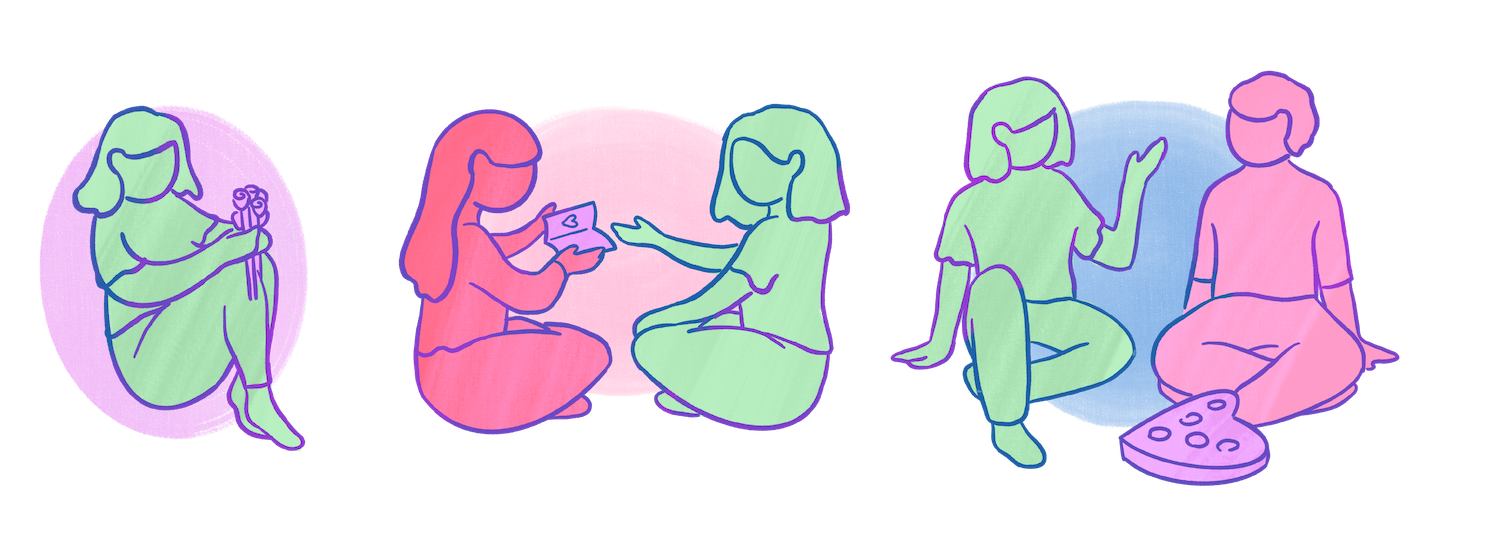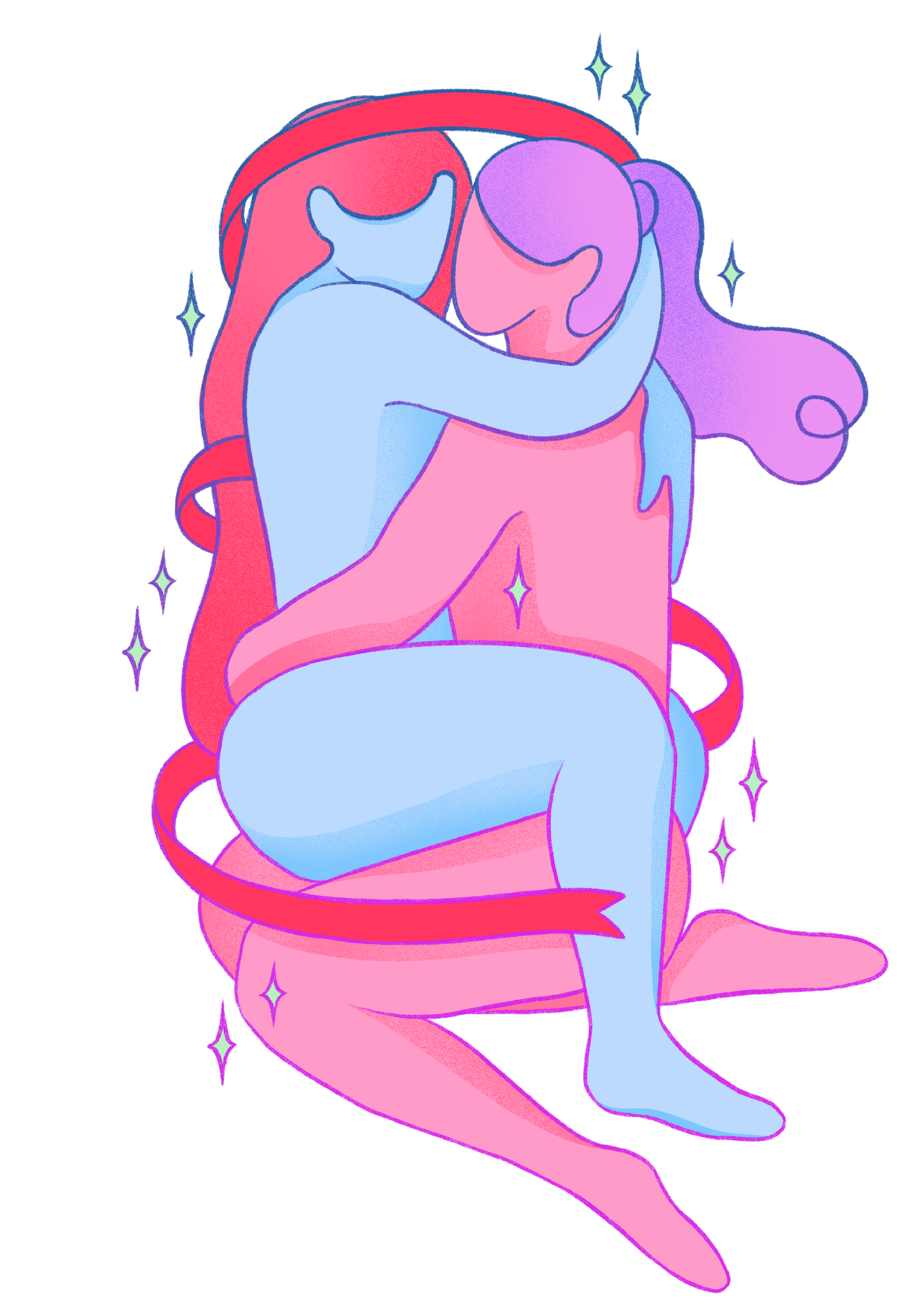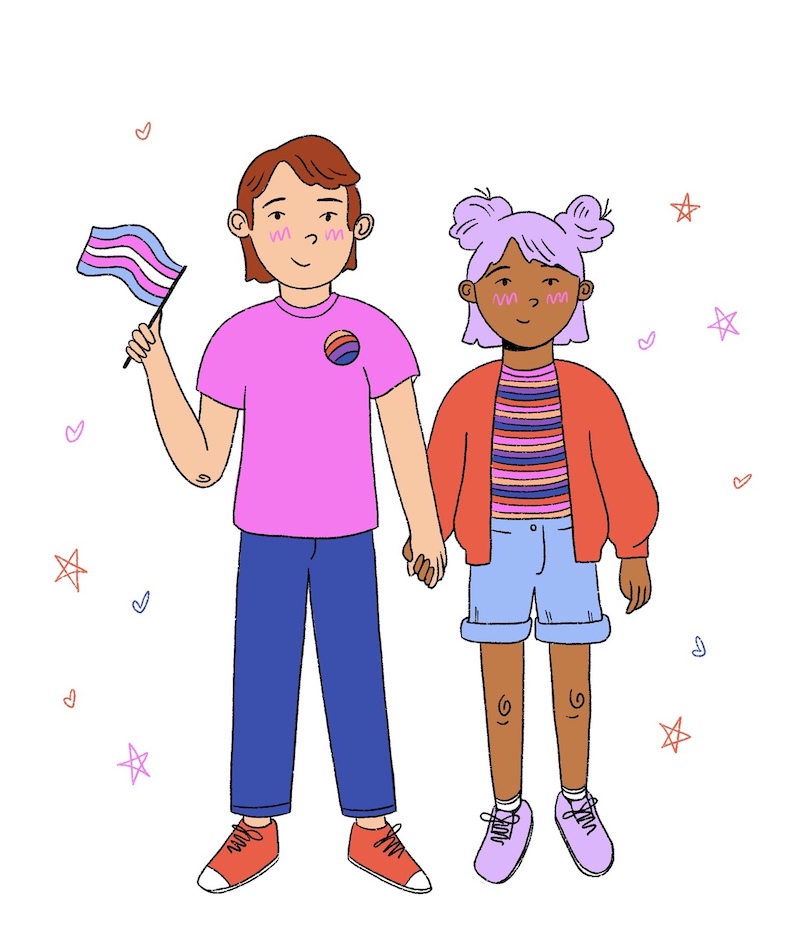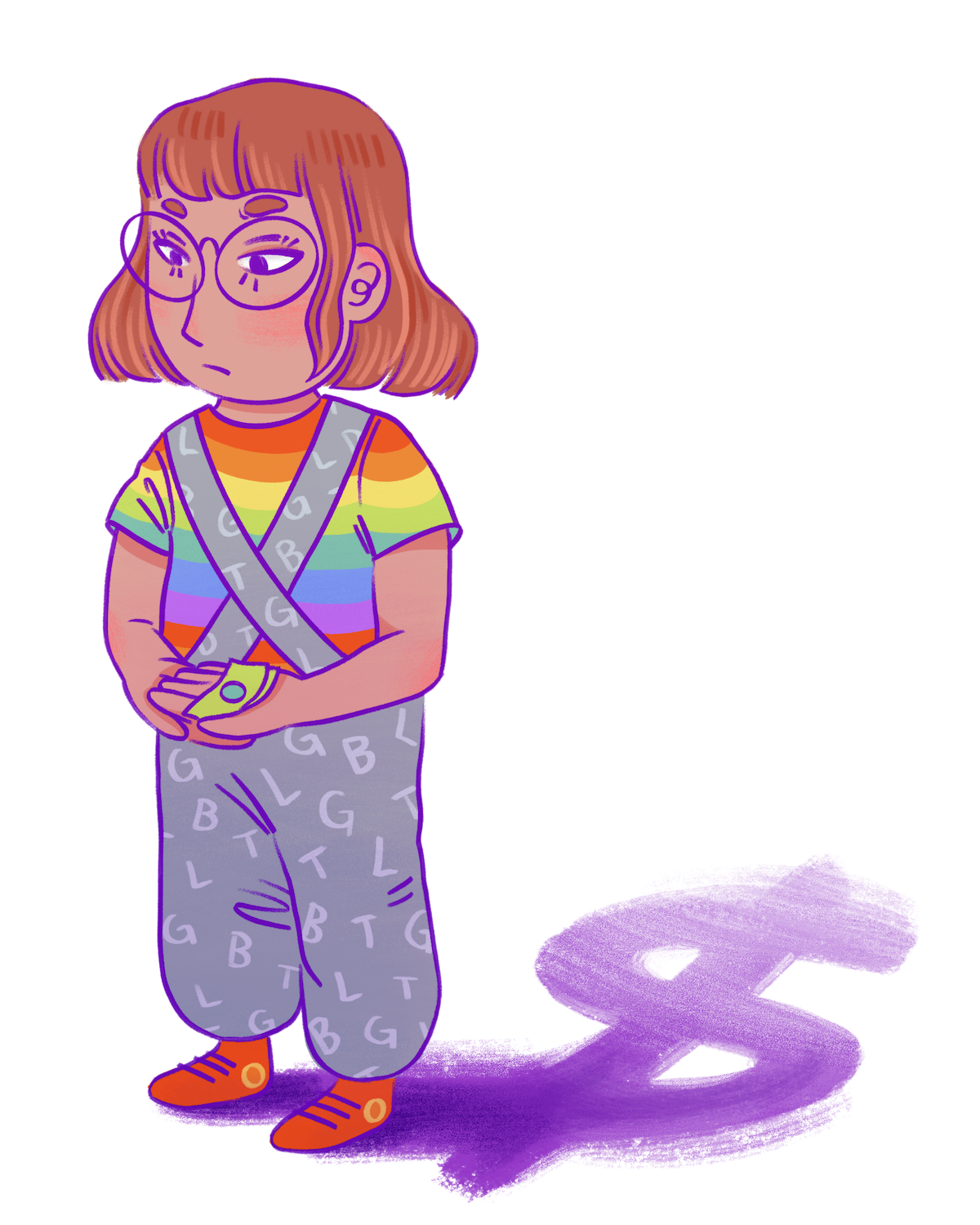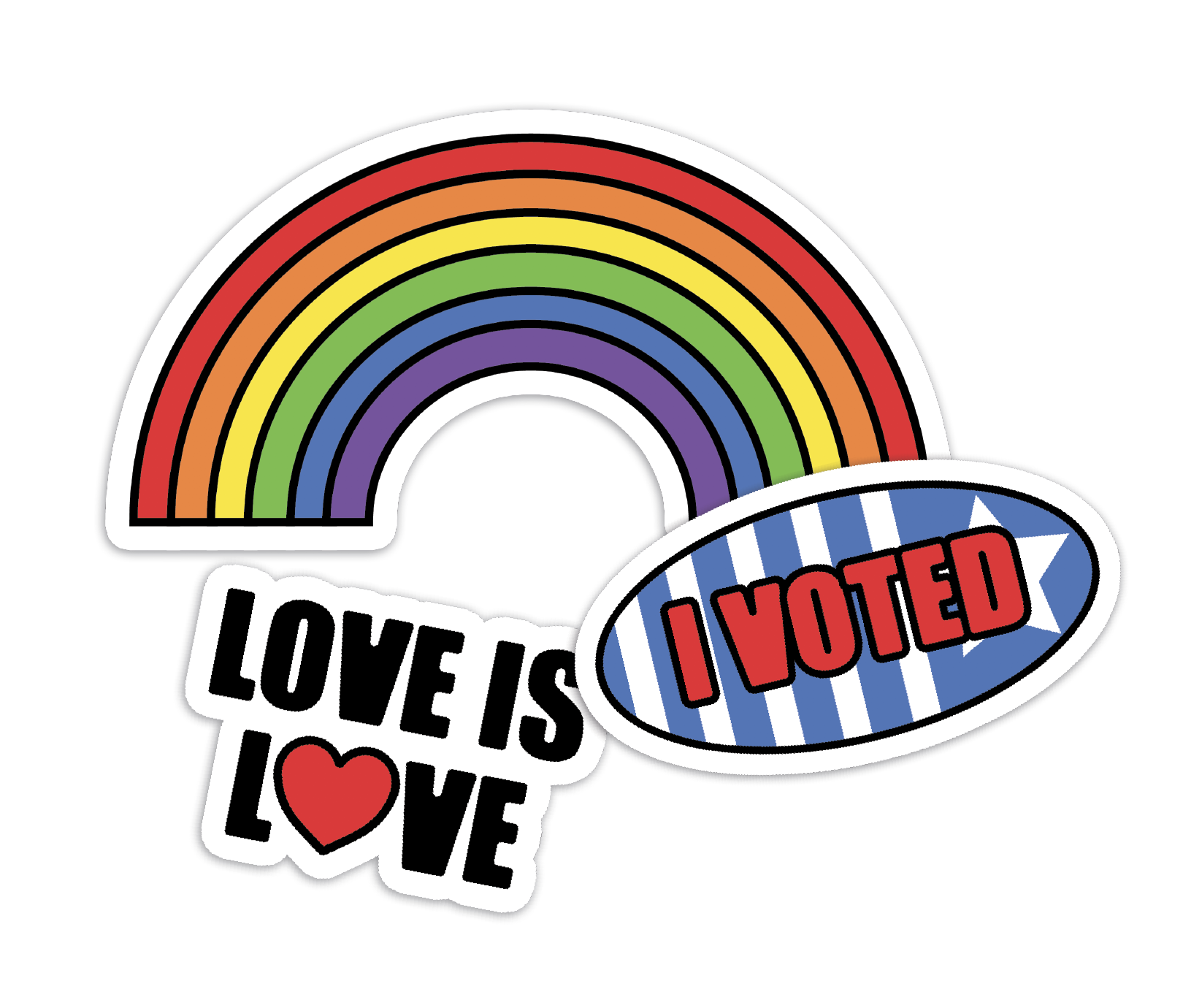a·ro·man·ti·cism
/āˈ/rōˈman(t)əˌsizəm/
An orientation in which someone does not experience romantic attraction.
- them.us
Aromanticism as a label is relatively new in its existence—and it was born purely out of the digital age. One writer on the blog AUREA, an online community created by and for aromantic people in 2019, wrote “if it were a person, with a life of its own, it would probably be a Gen Z.” The term was allegedly first coined in 2002 by a user in Yahoo group Haven for the Human Amoeba, one of the first online communities for people who identified as asexual. The user wrote, “I’d have to say that i’m not so much asexual…as averse to having ‘romantic’ relationships…what would be an appropriate term for somebody who is not quite asexual but who dreads the concept of being in a ‘relationship?’ Aromantic (LOL)?”
The term wasn’t picked up in a serious manner until 2005 when it was utilized by the largest online asexual community—Asexual Visibility and Education Network, or AVEN. According to AUREA, some AVEN users utilized the term “asexual-asexual” to denote they did not experience sexual or romantic attraction. Somewhere along the line, potentially lost to a deleted webpage or archived forum, the usage of aromanticism spread to other asexual forums, and led to the creation of aromantic-centered spaces divorced from asexuality such as Aropocalypse and aromantic.lgbt in the 2010s. In 2014, the most recent version of the flag was created, the word was incorporated into the LGBTQ+ acronym and the term gained popularity among both those on the asexual spectrum and those outside it.
Even though aromanticism was termed and communities were formed through existing asexual communities, the two are not the same. Some asexual people may idenitify as aromantic, and vice versa. The identities can overlap, but they both fall somewhere underneath the split-attraction model, which was popularized in the 2010s and separates the concept of romantic love from sexual attraction.
Aromanticism as a term might be relatively new, but the recorded absence of romantic attraction is not. In 1979, Dorothy Tennov wrote of limerent and non-limerent people—limerence being an outdated term for feeling romantic attraction. In her book Love and Limerence: The Experience of Being in Love, she theorized romantic and sexual love were not necessarily linked. In 2019, a blogger on AUREA put the pieces together and concluded that the term “non-limerent” was a precursor to the word aromantic. Whether or not this is the case, it served as a precursor to the split-attraction model, and allowed for a greater freedom of expression.
Fragments of aromanticism linger through less recent history, too. The Golden Orchid Society, a group of women in China during the 17th–20th century, is often cited as an example of textual evidence of public lesbian relationships, but it potentially included aromantic people, too. Within the society, women could marry women, but they could also remain unmarried. Unmarried women wore their hair as married women, and had individual ceremonies to celebrate their choice. We can’t ascribe labels to the women that chose not to marry, but as one volunteer for AUREA wrote, “it’s difficult not to see elements of our identity in their stories.”
Just because aromanticism was only recently coined in the last decade and doesn’t have a long recorded history doesn’t mean aromantic people didn’t exist. We can’t retroactively assign labels to historical figures, but no behavior or identity is unique. Maybe they were given degrading names, like spinsters or loners, or maybe they chose to marry or live with a platonic partner. Either way, traces of aromanticism exist and have existed for centuries.
This year’s aromanticism awareness week falls on Feb.17–23—though it differs slightly in each participating country, it always falls right after Valentine’s Day. Valentine’s Day is the heightened reflection of romantic cultural norms; it emphasizes the “one true love” complex, succinctly coined by aromantic Medium writer Michon Neal in 2016, and dismisses the significance of other types of relationships.
Neal argues it’s not only restrictive, but exclusive—limiting your view and expectations to only romantic love closes off infinite possibilities. As they wrote in a later article, their love “builds slowly, it has so many layers, it grows exponentially. It is not the sharp blissful, overwhelming love of romance. It is clear, it is solid, it is full. Eventually, I stumbled upon the term aromantic and I breathed a sigh of relief.”
It’s fitting that a holiday centered only around romantic love is followed by a celebration of the people who don’t experience it. Take the time on both Valentine’s Day and the week following it to consider what other types of love—platonic, familial, self—mean to you. While you’re considering, if you stumble across something that resonates, keep in mind there is no right or wrong way to be aromantic. Some aromantic people are asexual; some aren’t. Some aromantic people form queerplatonic relationships; some don’t. Some aromantic people have been in relationships; some haven’t. Aromantic people aren’t a monolith; their experiences span centuries, even if the words for their identity do not.

